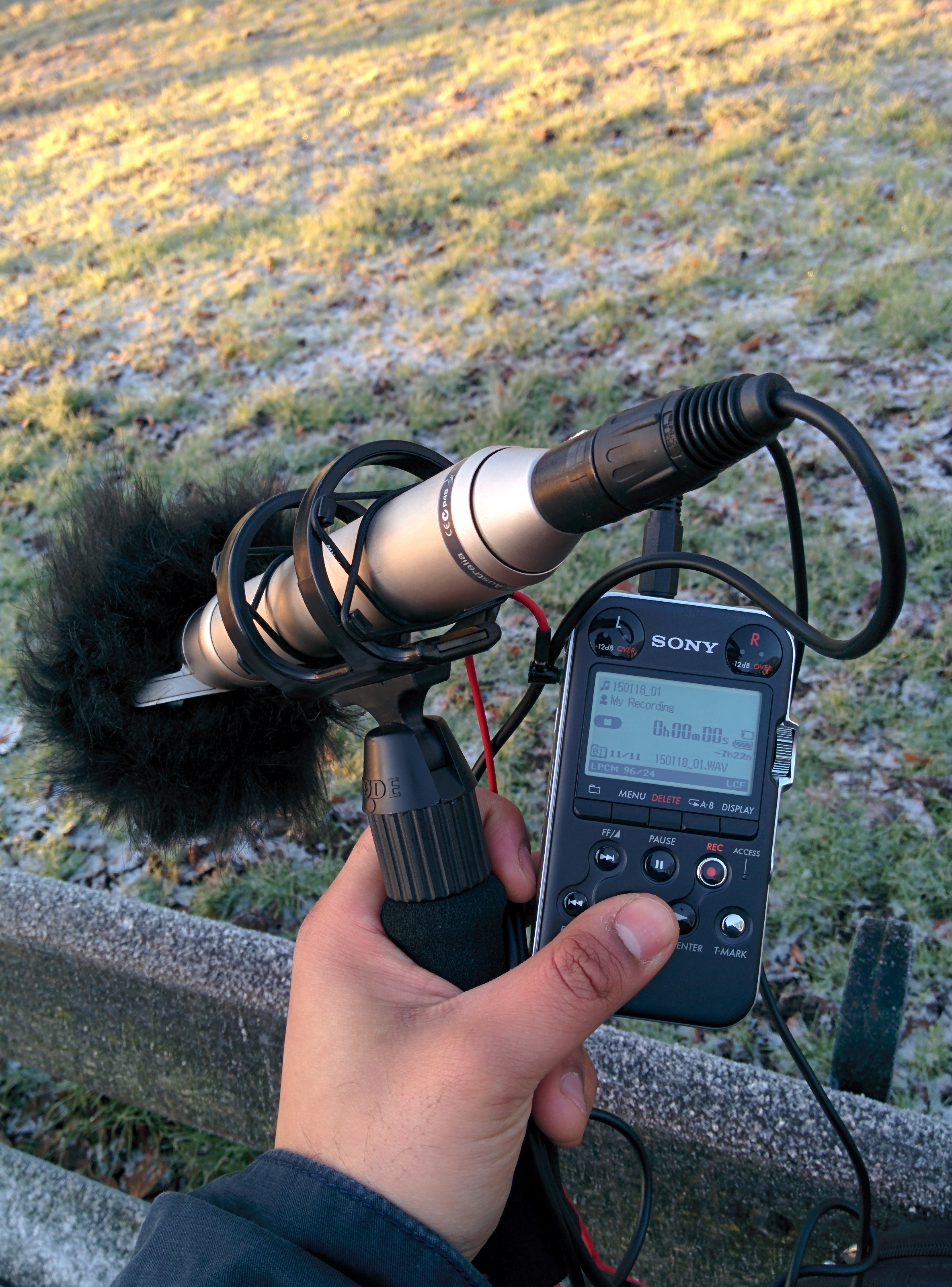So this is the second blog on how i've replaced the sound for Naughty Dog's The Last of Us.
A few things i forgot to mention in my last blog were the UI (User Interface) and Atmos sounds were created.
For the UI sounds I used a hybrid approach of software synthesis and hardware based processing. A majority of the tones were generated using Simple blended oscillators from Native Instrument's Massive :
These signals were then fed out through an interface and into an Eventide Eclipse unit for harmonic processing, then chained into a Yamaha SPX-990 and then a Bricasti M7 to add space and depth using reverbs. Overall i tried to go for subdued menu tones in order to fit with the general aesthetic of the game and not make it too jarring when transitioning between menus and gameplay.
Other tones were generated by pitching organic sounds such as a wood block and then feeding that signal into Guitar Rig's emulation of the old Electro Harmonix guitar Synth pedals. These were notoriously bad for their tracking and gave a very odd filter sweep to the sound, one that suited the menu tone well.
Another use of an organic sound was the use of a finger cymbal sample from Battery that was then fed into Logic's Tape Delay emulation, dialed in a short delay with high feedback and heavy modulation in order to accentuate a warbling effect as the sound decayed. It was very important with this not to trigger the delay into self-oscillation so finding the balance was important.
The Atmos however needed a little more work. For this i needed the sound of tweeting birds so i ventured off to the local park at the crack of dawn to go find some. Armed only with my brand new Sony PCM-M10 handheld recorder and my trusty Røde NT4 (with dead kitten) i stalked the birds on a freezing morning for about an hour and collection the sounds i needed, after cleaning up all the road noise using Isotope's amazing RX4 (seriously, what is this wizardry?) i had some pretty sounding birds to layer in.
So Cold.
Footsteps
For my footstep system i took heavy influence from Game Audio, rather than traditional linear film methods. In particular Wwise's method of randomised containers and switches to change footstep sounds based on surface or stance states really appealed to me. One of the biggest differences between Games and Film when it comes to movement sounds, is that in an Action game the player is very rarely stands still for an extended period of time. This was very true of the footage i had captured which featured constant movement for the whole duration and movement that would be deemed erratic at best if done in real life.
My solution to this was the use randomised samplers and MIDI program changes in order to trigger a wide variety of sounds in a simple and elegant manner. The first step in this was the map out all of the footsteps using MIDI notes. i did this using my Akai MPD to "play along" to the footsteps, which gradually got easier as i learnt the rhythms of each state (running, walking, crouching etc) animation cycle. Once these were in Sync it came to the actual implementation.
First up i had to chop all the footstep audio i had recorded into individual hits, making sure the edit was made at the transient and decayed nicely to avoid any glitches :
Then these were indivudally labelled and exported out of Pro Tools as clips. From here they were imported into Native Instrument's Battery 3 where they were all set to be triggered by the same note and randomly selected each time. This resulted in a different random footstep each time a note was triggered. This replicated Wwise's randomised container.
From here i took advantage of the fact that Native Instrument's Kontakt can do 2 really cool things.
- It can load multiple instruments into one unit that can be changed using midi program messages
- It can Battery files as self contained instruments.
So from here it was simply a case of loading all my Battery racks into Kontakt 5 and using midi program numbers to switch to the correct bank when needed (i.e when moving from water to concrete), this drew influence from Wwise's Switch system. It looks something like this:
Although the setup took a while, the end result gave me a robust and easy to use system, heavily borrowing from existing Game Audio methods, making syncing this linear game footage a lot easier.
The first lot of footage from this clip will be up in a few days, so hopefully this will start to make more sense. Until then, thanks for reading!
Haroon.




